From songbirds to birds of prey, all kinds of birds begin with the letter V. Check out this comprehensive list of 19 incredible birds that start with V, including their scientific names and interesting facts!
1. Varied Thrush – Ixoreus naevius
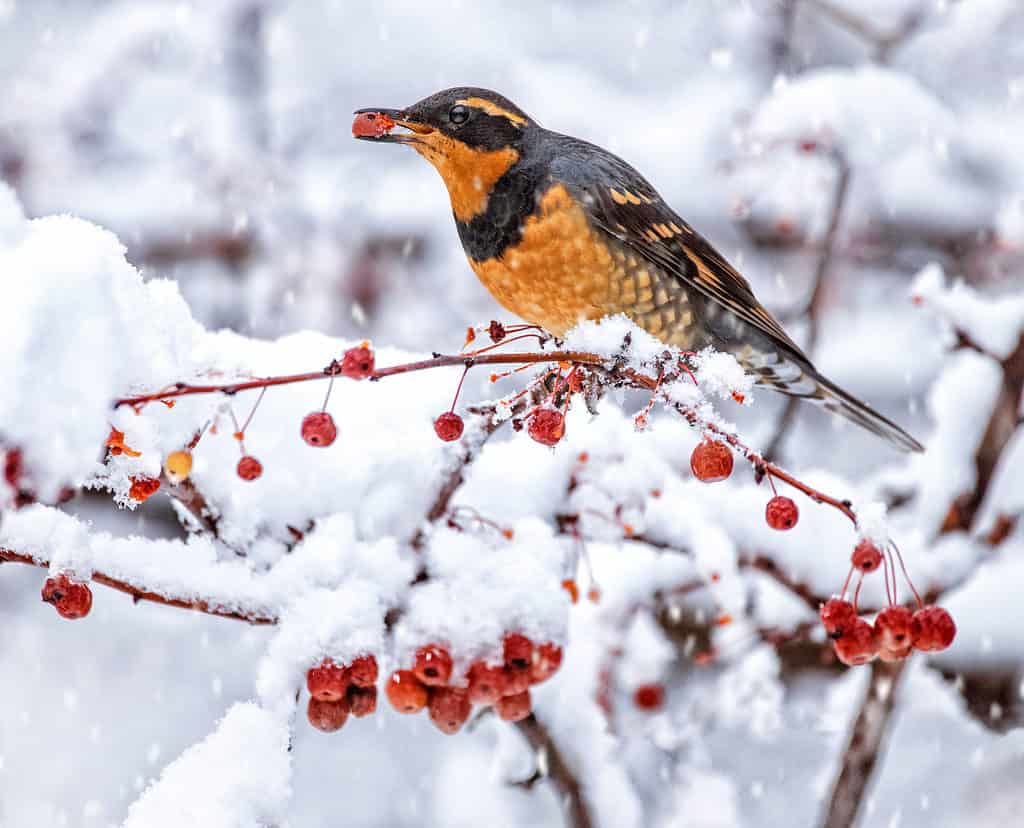
Varied thrushes are incredible birds that start with V.
©Annette Shaff/Shutterstock.com
The varied thrush is a songbird of the Western United States and Canada. This shy bird sings its simple tunes in the wet understories of peaceful forests, particularly in the Pacific Northwest. Varied thrushes feature dark gray and burnt orange plumage, standing out against the lush green of their environment.
2. Vermilion Flycatcher – Pyrocephalus rubinus
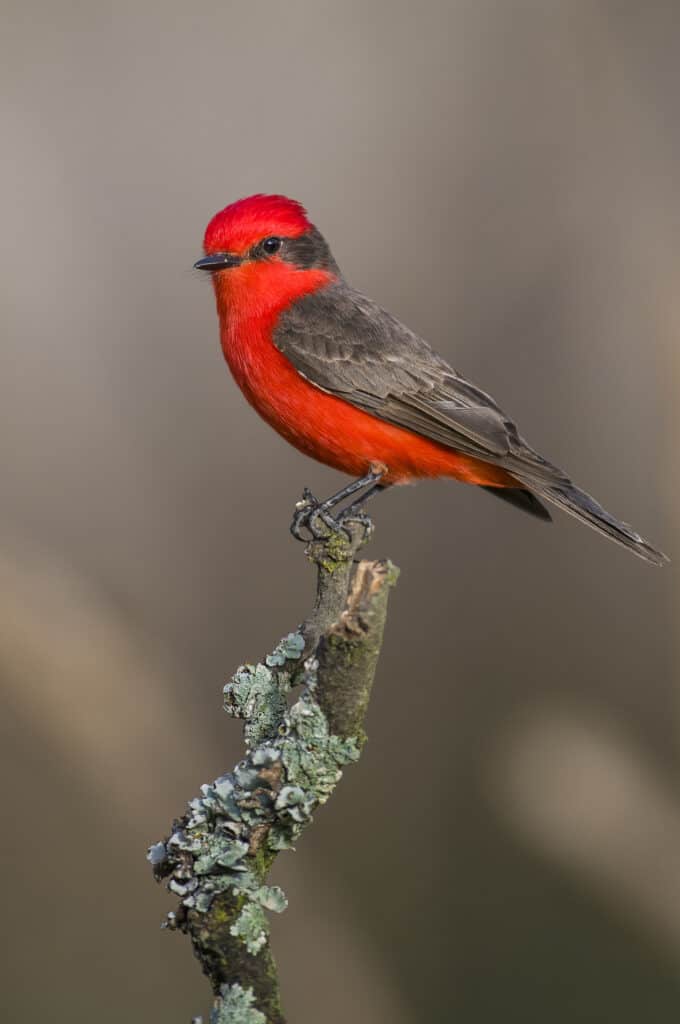
Vermilion flycatchers swoop from their perch to catch flying insects.
©Foto 4440/Shutterstock.com
The vermilion flycatcher is a bright red and warm brown bird of Mexico, Central America, and South America. It also occasionally inhabits areas of the American Southwest. This bird gained its name due to its tendency to swoop from its perch to grab flying insects mid-air. These birds are small but conspicuous as they sit on exposed branches.
3. Veery – Catharus fuscescens
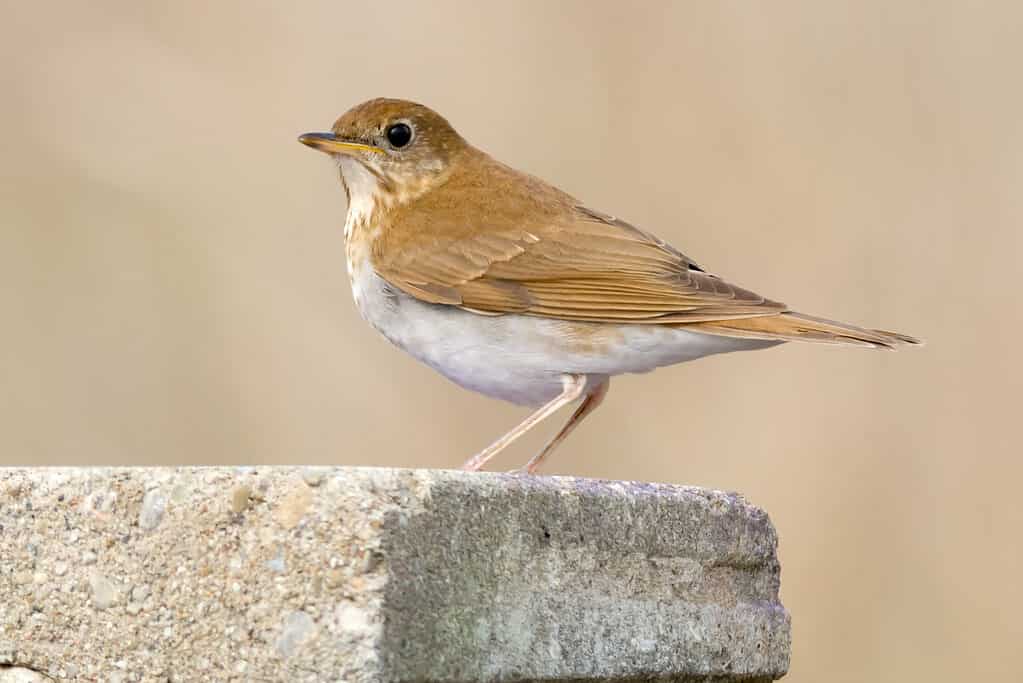
Veery birds are small thrushes with harsh calls.
©iStock.com/PaulReevesPhotography
The veery is a small thrush that gets its name due to its reedy, harsh calls. They have cinnamon-brown plumage with light spotting on the chest and throat. And they are common in the forest understory, where they forage for fruit and insects. This species breeds in the Northern United States and Southern Canada and winters in South America.
4. Varied Bunting – Passerina versicolor

Varied buntings forage in dense vegetation.
©iStock.com/Banu R
With crimson and lavender plumage, the varied bunting is an unmistakable sight in Mexico and parts of the Southwest. Because these birds spend their days in the shade of desert thorn forests, woodlands, and streamside thickets, you are unlikely to catch this species near populated areas. Instead, they forage in dense vegetation out of sight.
5. Variable Hawk – Geranoaetus polyosoma
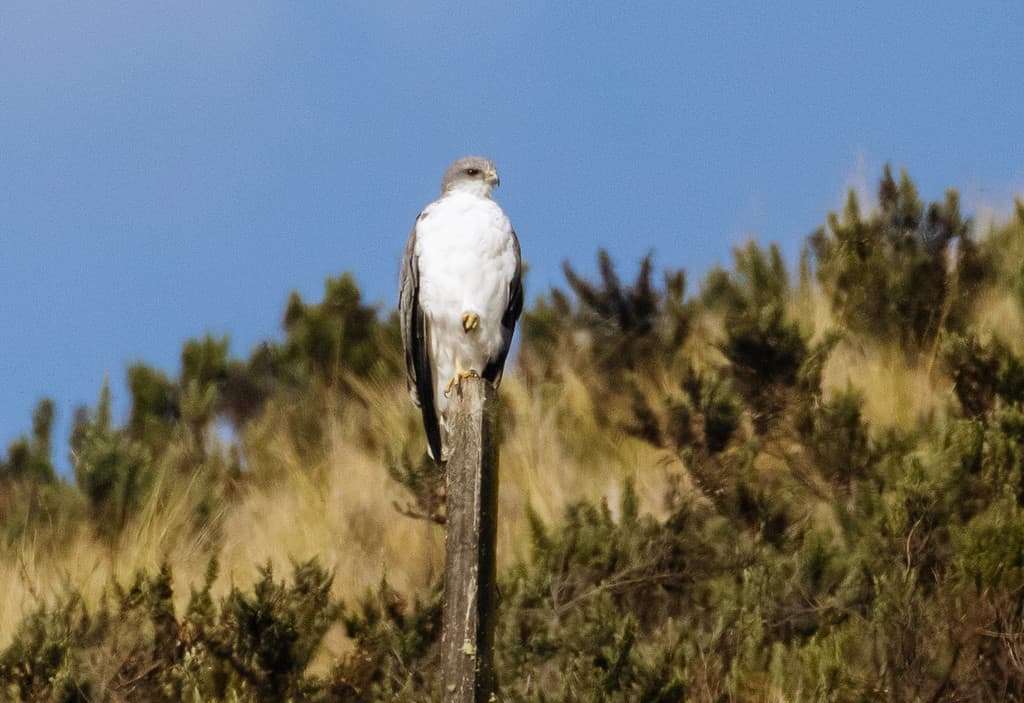
Variable hawks live in mountains and coastal foothills.
©CC BY 4.0 – License
The variable hawk is an impressive bird of prey that soars on warm thermals across the southern regions of Africa. And they live in many habitats, including mountains, coastal foothills, river galleries, lowland forests, and agricultural areas. Like other hawks, this species can likely fly well over 100 miles per hour, especially when diving for prey.
6. Variable Oystercatcher – Haematopus unicolor
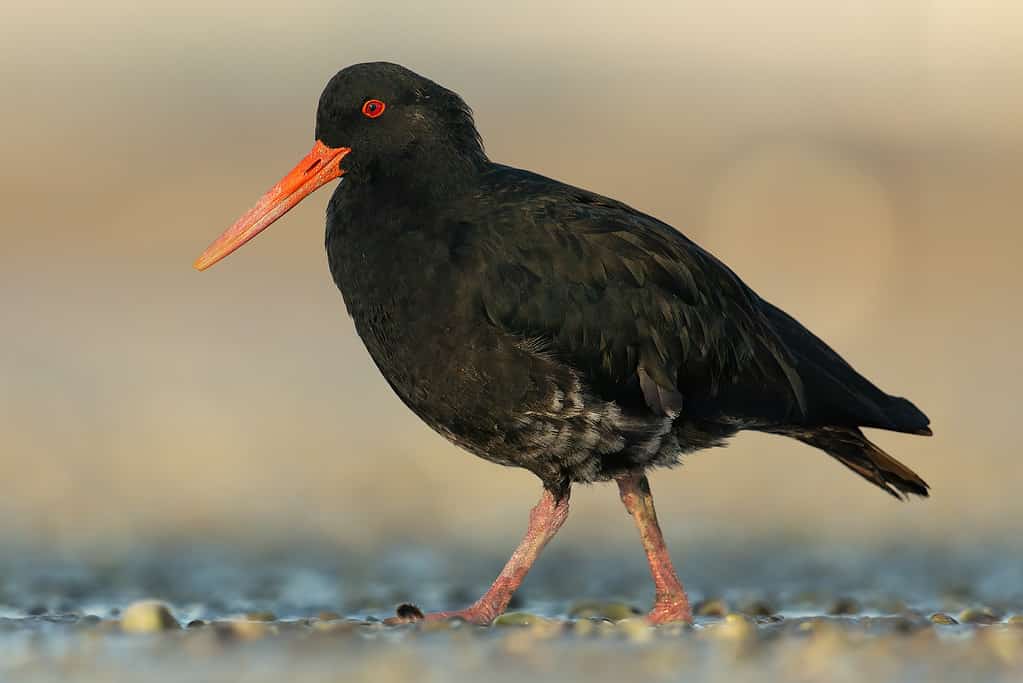
The variable oystercatcher is endemic to New Zealand.
©CC BY-SA 4.0 – License
This striking wading bird is all black, except for its bright reddish-orange bills and feet. The variable oystercatcher is endemic to New Zealand and has likely stayed endemic due to its sedentary lifestyle. You can often see them along the coast, where they breed in sandy habitats. Listen for their unique “kleep kleep” calls as they fly overhead.
7. Varied Lorikeet – Psitteuteles versicolor
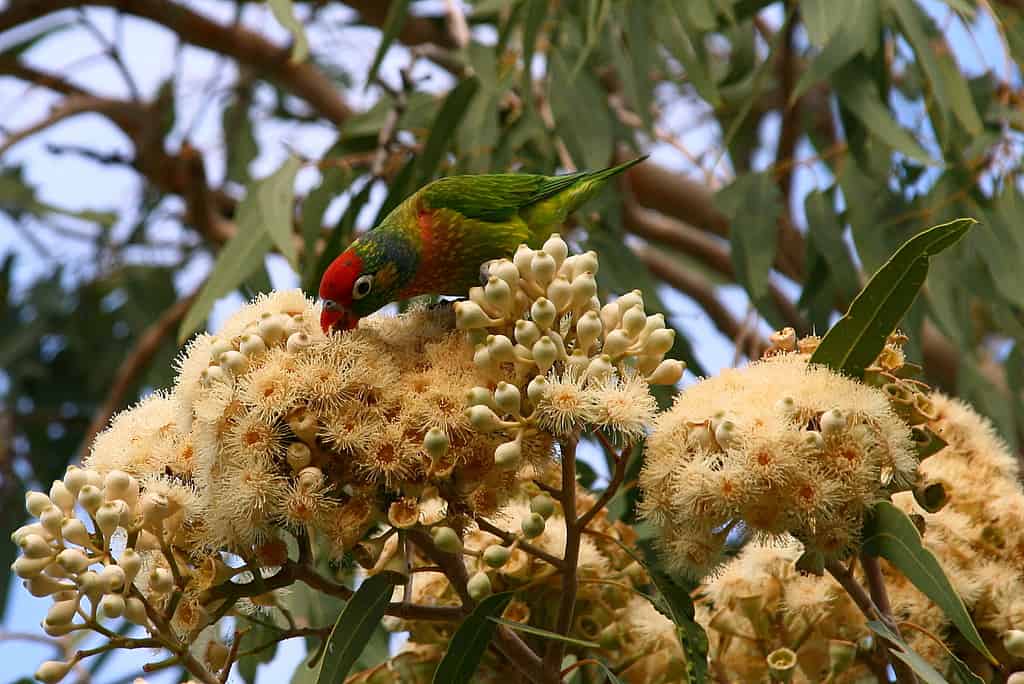
Varied lorikeets are endemic to Australia’s northern coast.
©CC BY 2.0 – License
The varied lorikeet is a parrot species with green, yellow, and red plumage. These birds are endemic to Australia’s northern coast, where it lives in tropical eucalypt forests, grasslands, and wetlands. Varied lorikeets are swift flyers, and they make loud screeches during flight and with their flocks. You can find them in Queensland, Western Australia, and Northern Territory.
8. Variegated Fairywren – Malurus lamberti
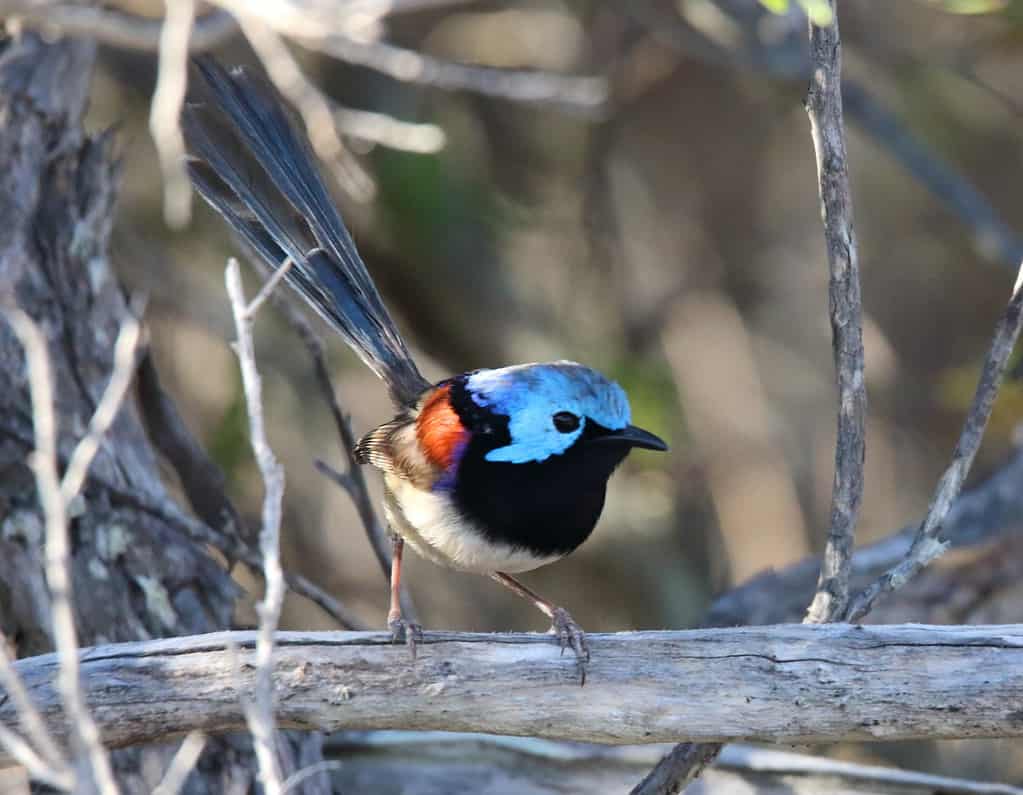
Variegated fairywrens live in scrubland with dense vegetation.
©CC BY-SA 2.0 – License
These small fairywrens are native to far eastern regions in Australia. Males are brightly colored, featuring azure crowns and black, royal blue, and chestnut bodies. This species presents sexual dimorphism, meaning the females appears very different from the males. You can find variegated fairywrens in scrubland with dense vegetative cover, such as pine and eucalypt plantations.
9. Velvet Dove – Ptilinopus layardi
Also known as the whistling fruit dove, this species is a small dove endemic to islands in the south of Fiji. The velvet dove is a golden dove known for its velvety plumage in green and yellow. These birds live in dense forest canopies and can be difficult to find. However, their distinctive whistling calls give them away.
10. Velvet-Fronted Nuthatch – Sitta frontalis
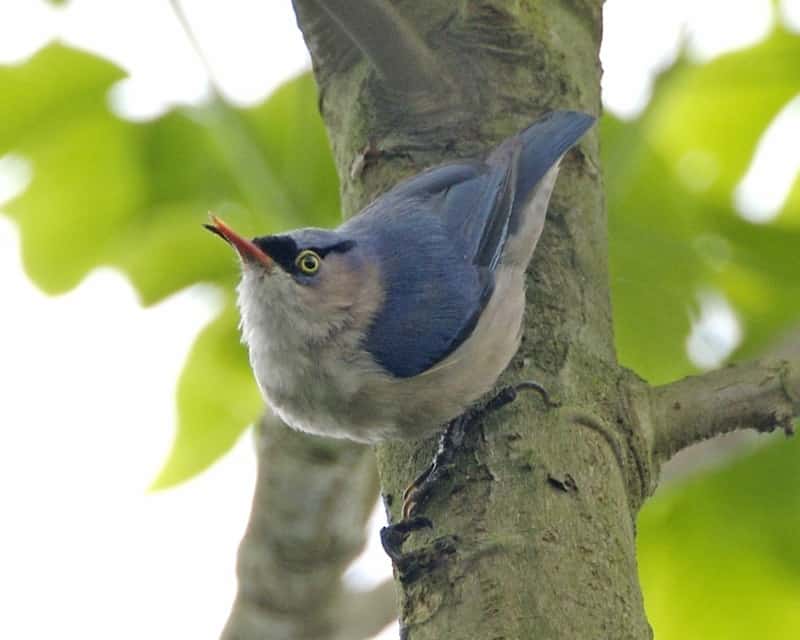
Velvet-fronted nuthatches live in South Asia, where they breed in forests.
©CC BY-SA 2.0 – License
The velvet-fronted nuthatch is a small passerine with short tails and long, powerful bills. This bird is violet-blue above and beige below, with a red bill and yellow eyes. You can find this species in South Asia in countries such as Indonesia, China, Nepal, India, Bangladesh, and Sri Lanka. And they breed in many types of forests.
11. Velvety Black Tyrant – Knipolegus nigerrimus
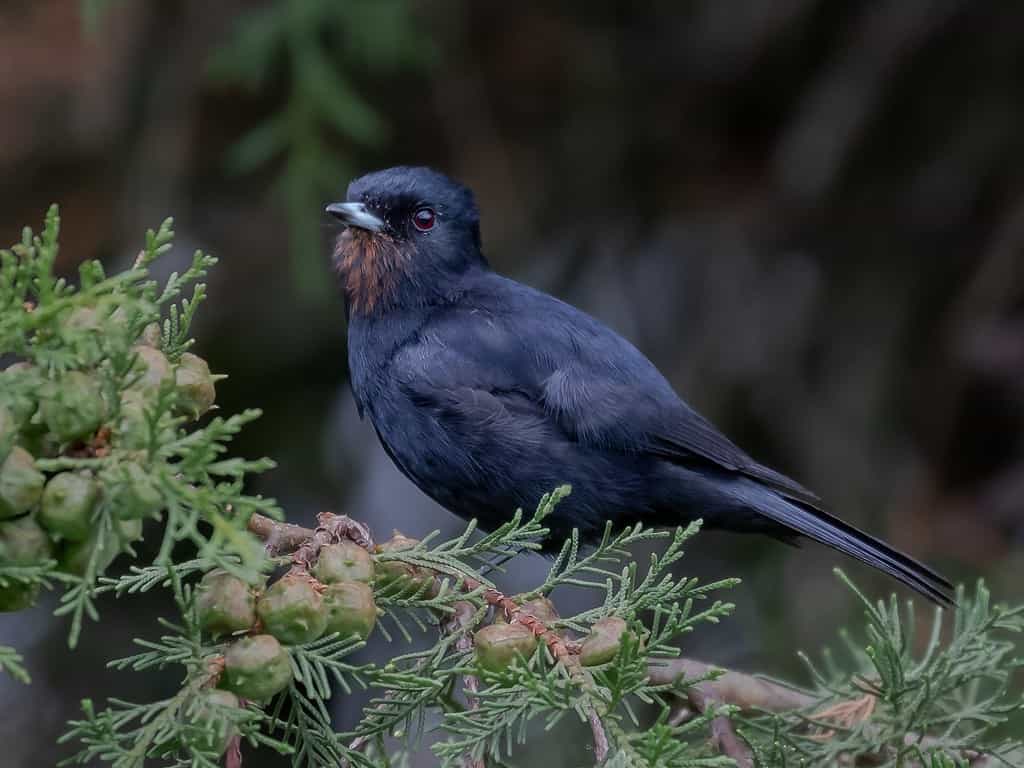
Velvety black tyrants are endemic to Brazil.
©CC BY-SA 4.0 – License
The velvety black tyrant is a species of flycatcher from the Tyrannidae family. This velvety all-black bird is endemic to Brazil, where you can find it in temperate forests, montane forests, and high-altitude shrubland.
12. Venezuelan Flycatcher – Myiarchus venezuelensis
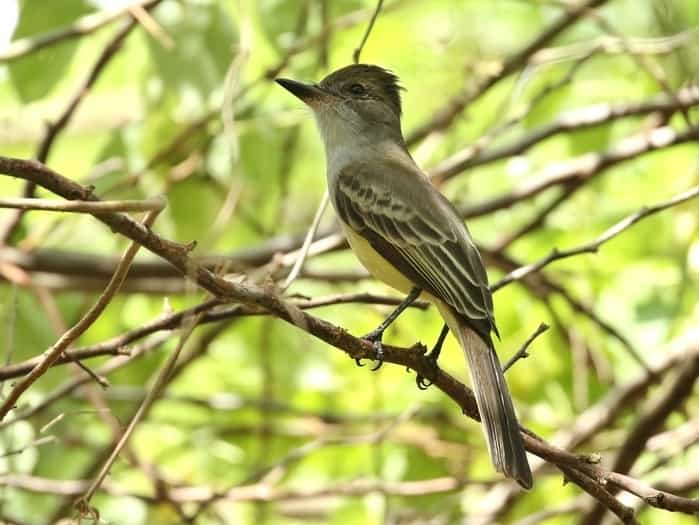
Venezuelan flycatchers have long tails and short crests.
©CC BY-SA 4.0 – License
These birds belong to the tyrant flycatcher family and feature long tails and short crests on their heads. The Venezuelan flycatcher is brown above with gray breasts and yellow bellies. And both males and females look similar. This species resides in Colombia, Venezuela, and Tobago, where they nest in tree cavities in forests and woodlands.
13. Verdin – Auriparus flaviceps

The verdin averages around 4 inches in length.
©iStock.com/Rodrigo Izquierdo
Tiny and gray with bright yellow faces, the verdin offers a bright flash of color in the hot desert scrubland of the Southwest. They look similar to chickadees but are in a family all their own. These birds are active during the early mornings before the heat takes over. And you can find them year-round in Mexico and the Southwest states, like Texas, Arizona, and New Mexico.
14. Vermiculated Screech Owl – Megascops guatemalae vermiculatus
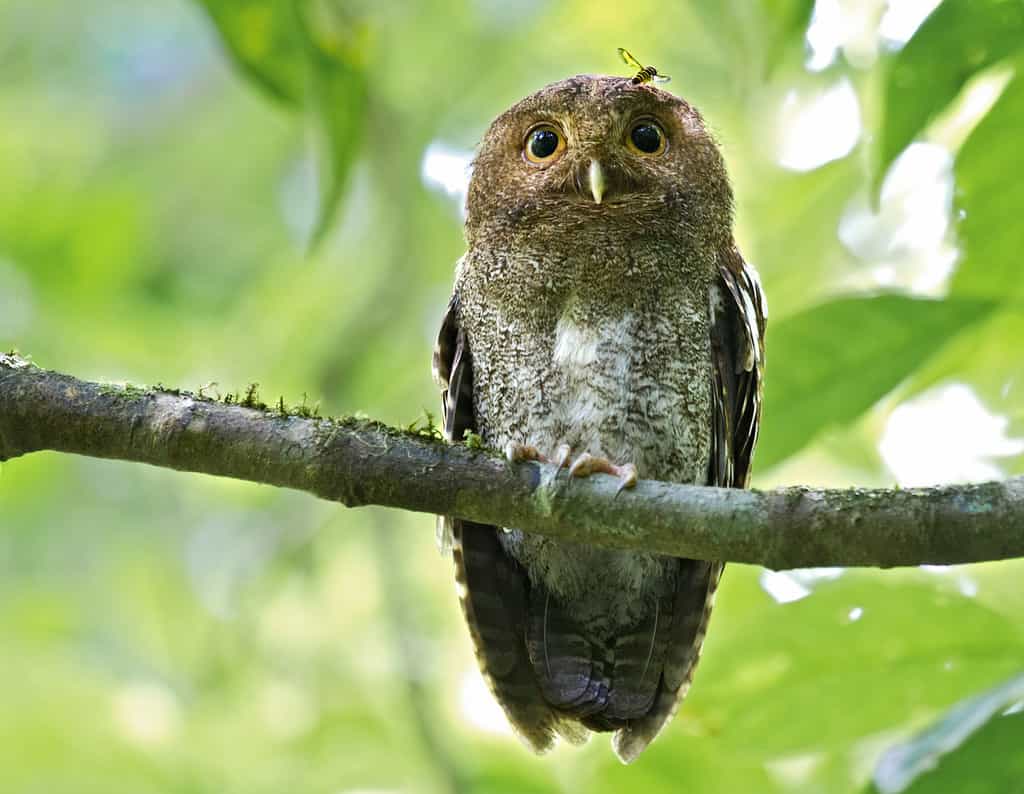
Vermiculated screen owls inhabit humid forests.
©CC BY-SA 2.0 – License
Found in Costa Rica, Panama, and Nicaragua, the vermiculated screech owl inhabits humid forests, where it nests in tree cavities and feeds on flying insects. This owl measures between eight and nine inches long and features different morphs, including a brown and rufous morph. These owls also have feathered feet and short ear tufts.
15. Violet Turaco – Musophaga violacea
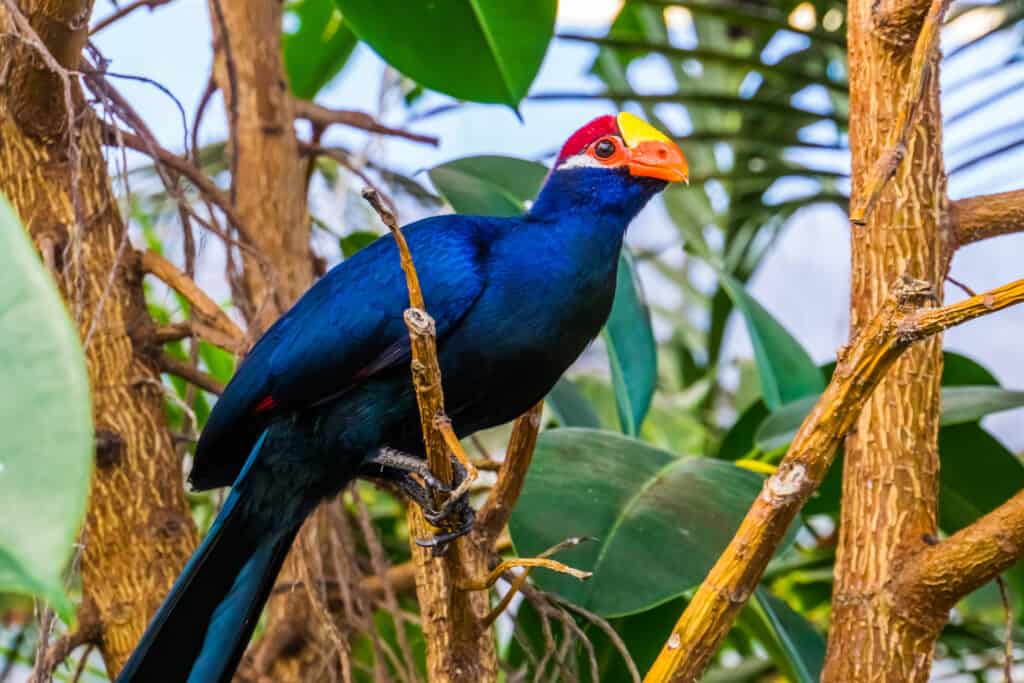
Violet turacos are birds of West Africa.
©Charlotte Bleijenberg/Shutterstock.com
This large turaco species is a resident of West Africa, where it lives in woodlands, forests, and tropical savannas. The violet turaco is a shy bird that stays in the treetops. But their bright violet, yellow, and crimson colors give them away. While this species is common within its range, it is vulnerable to trapping.
16. Violet-crowned Hummingbird – Leucolia violiceps

Violet-crowned hummingbirds are native to Mexico.
©Matthew Jolley/Shutterstock.com
These beautiful and elegant-looking hummingbirds are native to Mexico, occasionally reaching the southeastern border of Arizona during the breeding season. The violet-crowned hummingbird features a sparkling purple head and a long red bill, unmistakable on sycamore trees throughout canyons. You can find them mid-day, perching on exposed branches.
17. Violet-Green Swallow – Tachycineta thalassina
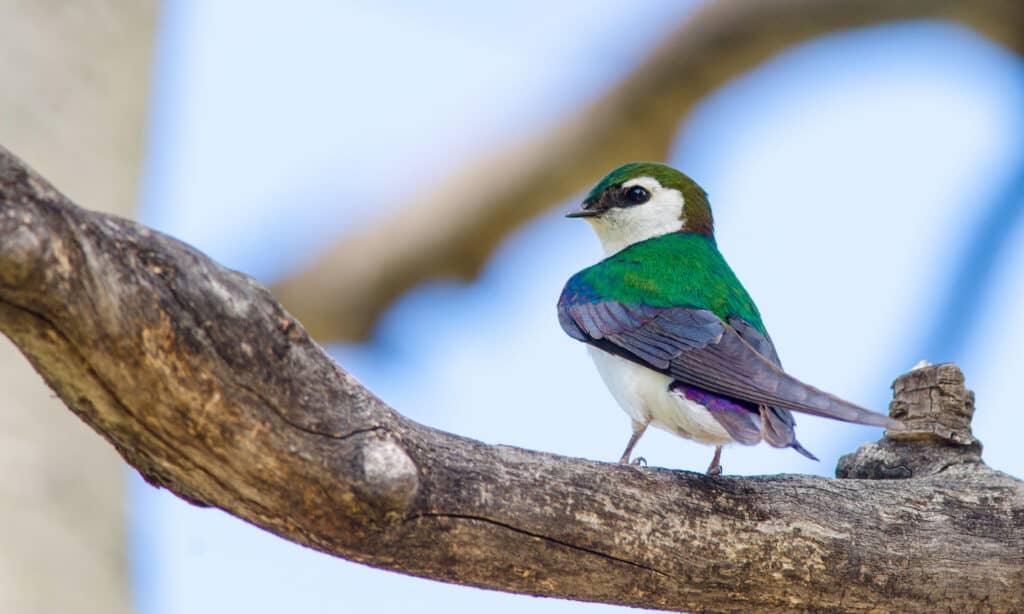
Violet-green swallows shimmer metallic in the sunlight.
©iStock.com/spates
The violet-green swallow is easy to spot soaring through the air looking for flying insects. These birds feature vibrant dark green and purple plumage, which shimmer metallic in the sunlight. They are common during springs and summers in the Western United States and Canada. And you can find them year-round in parts of Mexico.
18. Virginia’s Warbler – Leiothlypis virginiae
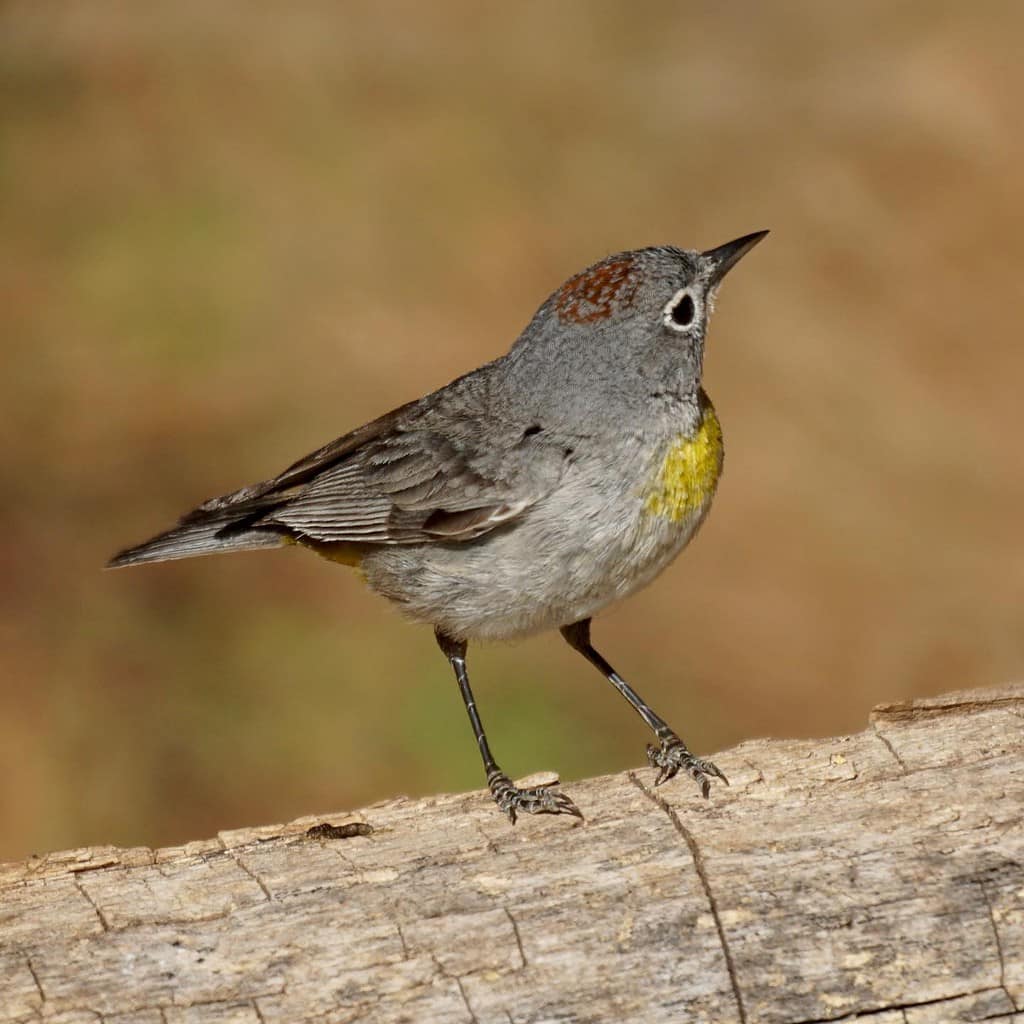
Virginia’s warbler lives primarily in pinyon pine woodlands.
©CC BY-SA 2.0 – License
While its name might suggest otherwise, the Virginia warbler inhabits areas of the Southwest, primarily pinyon pine woodlands. These small, gray warblers feature flashes of bright yellow but can be easy to miss when they forage in their woodland homes due to their shy behavior.
19. Volcano Hummingbird – Selasphorus flammula
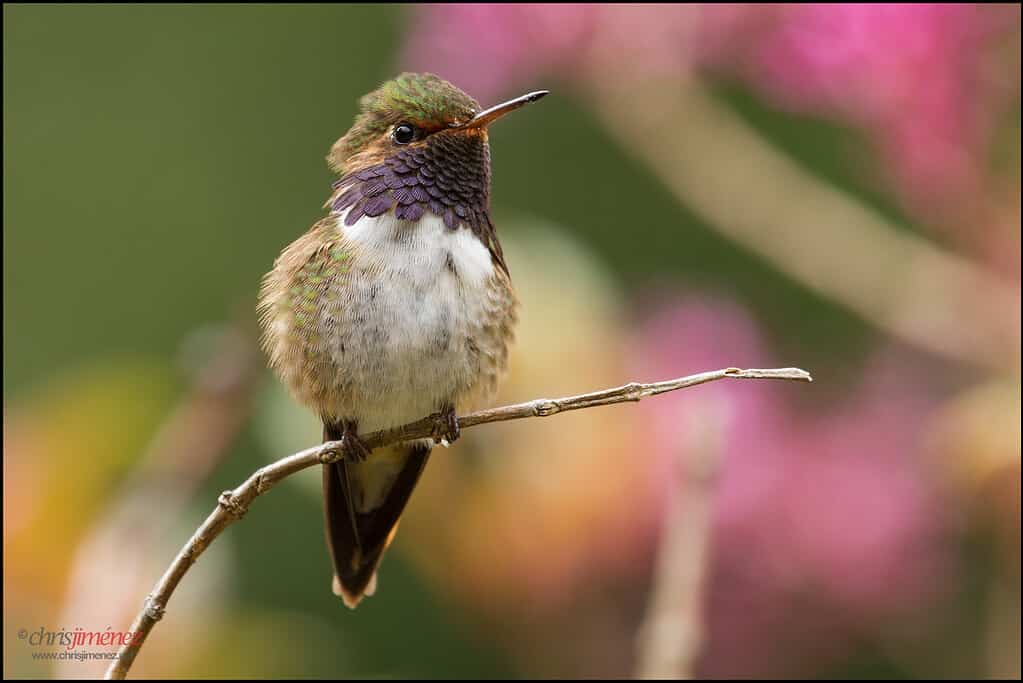
Volcano hummingbirds live on active volcanoes.
©CC BY-SA 2.0 – License
The volcano hummingbird is a bee hummingbird, measuring about three inches long and weighing less than an ounce. They live in Costa Rica and Panama on several different active volcanoes. This species lives on high mountain slopes in ashfall areas or on the edges of forests.
A Recap of the 19 Birds That Start With V
| Common Name | Scientific Name |
|---|---|
| Varied thrush | Ixoreus naevius |
| Vermilion flycatcher | Pyrocephalus rubinus |
| Veery | Catharus fuscescens |
| Varied bunting | Passerina versicolor |
| Variable hawk | Geranoaetus polyosoma |
| Variable oystercatcher | Haematopus unicolor |
| Varied lorikeet | Psitteuteles versicolor |
| Variegated fairywren | Malurus lamberti |
| Velvet dove | Ptilinopus layardi |
| Velvet-fronted nuthatch | Sitta frontalis |
| Velvety black tyrant | Knipolegus nigerrimus |
| Venezuelan flycatcher | Myiarchus venezuelensis |
| Verdin | Auripus flaviceps |
| Vermiculated screech owl | Megascops guatemalae vermiculatus |
| Violet turaco | Musophaga violacea |
| Violet-crowned hummingbird | Leucolia violiceps |
| Violet-green swallow | Tachycineta thalassina |
| Virginia’s warbler | Leiothlypis virginiae |
| Volcano hummingbird | Selasphorus flammula |
The Largest Bird That Starts With V
The variable hawk is the largest bird that starts with V, measuring 18 to 25 inches long and weighing 1.8 to four pounds. They also have wingspans reaching 60 inches.
The Fastest Bird That Starts With V
The variable hawk is also the fastest bird that starts with V. These hawks, like other species, can reach well over 100 miles per hour when diving for prey.
The photo featured at the top of this post is © CC BY-SA 2.0 – License / Original
Thank you for reading! Have some feedback for us? Contact the AZ Animals editorial team.







